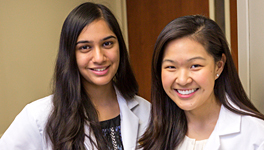Credentials: Pharm.D., BCPS
Position/Title: Clinical Specialist, Emergency Medicine and Assistant Professor, Department of Clinical Pharmacy
Organization: Blount Memorial Hospital and University of Tennessee College of Pharmacy
Primary Specialty: Emergency Medicine
Specialties: Emergency Cardiovascular Care, Advanced Cardiac Life Support
Education/Advanced Training
After completing pharmacy school at Ferris State University in Michigan, I went on to complete residency training in Grand Rapids, Michigan. I am currently certified by the American Heart Association (AHA) as an Advanced Cardiac Life Support (ACLS) provider and instructor, an AHA Pediatric Advanced Life Support (PALS) provider and instructor, an AHA Basic Life Support and Cardiopulmonary Resuscitation (CPR) provider and instructor, and an American Stroke Association National Institutes of Health (NIH) Stroke Scale Provider. I have also received board certification as a Board Certified Pharmacotherapy Specialist (BCPS).
Type of Patient Population Served
The emergency department (ED) is a unique and challenging practice setting, and each day is a bit different from the last. The ED services a diverse population, with patients that span the generations – from the pediatric to the geriatric population – as well as providing care to nearly every disease state imaginable – from acute psychiatric conditions to infectious diseases to cardiac arrest. The disease states treated in the ED are as diverse as the patient population. I am currently practicing in a community ED, which has ≈55—60,000 patient visits per year, or 150—200 patients per day.
Roles and Responsibilities
In general, my role within the ED can be described as a combination of providing recommendations to optimize empiric pharmacotherapy regimens, providing answers to drug information requests, participating in the resuscitation of critically ill patients, participating in the delivery of high risk procedures involving medications (e.g., rapid sequence intubation, procedural sedation), and providing education to healthcare providers and patients. Within my institution, I serve on several specialized resuscitation teams, including the STEMI team and the Sepsis Response Team. I also provide educational experiences for pharmacy students and residents in the emergency department.
How I Got to Where I am Today
I started working in the healthcare field in 1996, and found that I truly enjoyed working in the ED. As I completed pharmacy school, I continued to explore different practice areas, and was still determined at that time that the ED was the challenging and rewarding career path for which I was looking. After completing pharmacy school, I went on to complete residency training, and then obtained a position as a clinical specialist, where I was able to develop an ED clinical service.
Advice for Students Pursuing this Career Path
I highly recommend that you find something that you love, and then make that your career. If you find that getting up to leave in the morning becomes “work,” it is time to find something new. You will know that you have found the right “place” if you can leave at the end of the day and feel like you have made a difference. I feel this way each and every day that I leave the ED. Some words of advice that I find particularly relevant in my professional career are:
“Nothing great has been, and nothing great can be, accomplished without passion.” –G.W.F. Hegel
“A wise man proportions his beliefs to the evidence.” –David Hume
“Knowledge before the fact equals confidence during the act”. –Heather Draper Eppert
To begin a career in Emergency Medicine, I would recommend that you complete an advanced pharmacy practice experience in the emergency department. This initial experience will help you to determine if this is what you “love.” If this is not available to you, I would recommend that you contact an ED pharmacy practitioner to arrange an opportunity to shadow them in the ED. If you find that you just can’t “get enough” of, or love, the ED, then I highly recommend that you complete a PGY-1 residency, followed by a PGY-2 residency in Emergency Medicine. The ED is different than any other practice setting in the healthcare system, and completing residency training really is the best way to ensure that you are prepared to be an independent practitioner in the ED – not only from the knowledge, but also from a confidence standpoint.
Professional Organizations/Activities Outside of Day-to-Day Job Responsibilities
In addition to serving as a clinical specialist in the ED, I am a full time faculty member for the University of Tennessee College of Pharmacy. In this role, I provide both didactic and experiential education to Doctor of Pharmacy students related to cardiology, toxicology, and emergency medicine. I also serve as a PGY-1 residency preceptor, offering rotations for pharmacy residents in Emergency Medicine and Academia, and regularly serve as a residency project preceptor. I am also an active member of several professional pharmacy organizations, including ASHP, ACCP, and APhA, as well as SCCM and AACT/ABAT. I am currently the chair of the ASHP Section Advisory Group on Emergency Care. I also enjoy conducting research and publishing manuscripts in the professional medical literature. My research interests and focus have been in the area of cardiopulmonary resuscitation, and specifically, the role of the pharmacist on the resuscitation team.
Contact Information
You can reach me by e-mail at [email protected]


